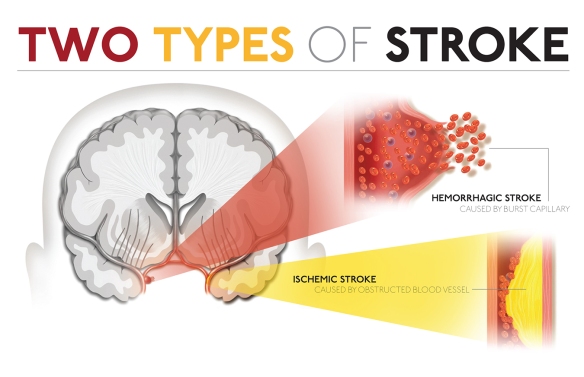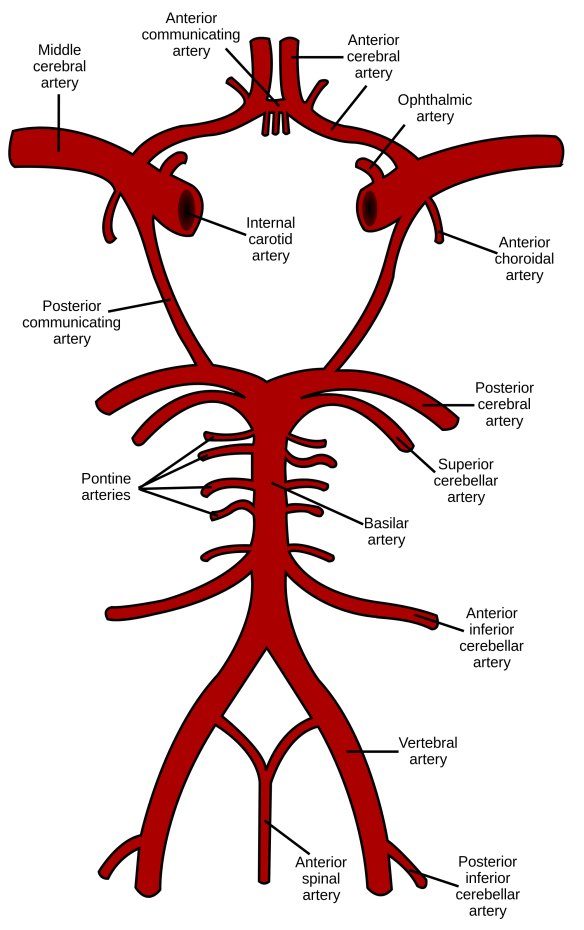Blog
Cerebral Vascular Accidents
Blood supplies brain cells with essential nutrition, such as glucose and oxygen. Oxygen supply by the bloodstream is vital to normal brain function. A cerebral vascular accident (CVA) occurs when there is an interruption in the supply of oxygenated and blood to the brain. This can be caused by an artery that has ruptured or an obstruction of an artery (Isaksen et. al,. 2008). CVA’s are classified as either hemorrhagic or ischemic. Hemorrhagic type strokes are the result of a blood vessel rupturing, such as an aneurysm. An aneurysm is a ballooning area of an artery. The ballooning causes the walls of the aneurysm to become stretched and thinned. An aneurysm ruptures when wall tension exceeds the strength of the wall tissue (Isaksen et. al,. 2008). The rupturing of an aneurysm results in spilling of blood into the subarachnoid space, thus resulting in a hemorrhagic stroke (Cebral et. al., 2005).
to the brain. This can be caused by an artery that has ruptured or an obstruction of an artery (Isaksen et. al,. 2008). CVA’s are classified as either hemorrhagic or ischemic. Hemorrhagic type strokes are the result of a blood vessel rupturing, such as an aneurysm. An aneurysm is a ballooning area of an artery. The ballooning causes the walls of the aneurysm to become stretched and thinned. An aneurysm ruptures when wall tension exceeds the strength of the wall tissue (Isaksen et. al,. 2008). The rupturing of an aneurysm results in spilling of blood into the subarachnoid space, thus resulting in a hemorrhagic stroke (Cebral et. al., 2005).
An ischemic type of stroke is the result of a blood clot or sclerotic material obstructing blood flow to the brain. An ischemic stroke can be the result of a thrombosis or an embolism. A thrombosis is a clot that forms inside of the brain. An embolism is a clot that forms elsewhere in the body and travels through the bloodstream towards the brain. An embolus blood clot is often caused by atrial fibrillation (Jespersen & Ostergaard 2012).
Obstruction of oxygen and glucose supply to the brain can result in impairments in speech and in voice (Jespersen & Ostergaard 2012). For example, a CVA may result in vocal fold paresis or paralysis, dysarthria, aphasia, or apraxia. The changes in speech and voice are dependent on the location and the extent of the cerebral event.
Although CVA’s may result in speech impairments, initial severity of symptoms often become less severe. This is due to a reduction in swelling in the areas of the brain that were impacted. Additionally, when one area of the brain is impacted by a CVA blood supply is often still supplied by way of the circle of Willis. The circle of Willis is the ultimate form of collateral circulation and plays an important role preserving blood supply to brain tissue following an obstruction (Romero et. al. 2009).
The circle of Willis works to secure blood supply to each side of the brain. Therefore, if a person experiences a CVA in one area of the brain, blood supply to that portion may still
be delivered. The presence of collateral circulation is a favorable prognostic factor in cases of CVA (Romero et. al. 2009).
Rose Costanzo MA CF-SLP, TSSLD




